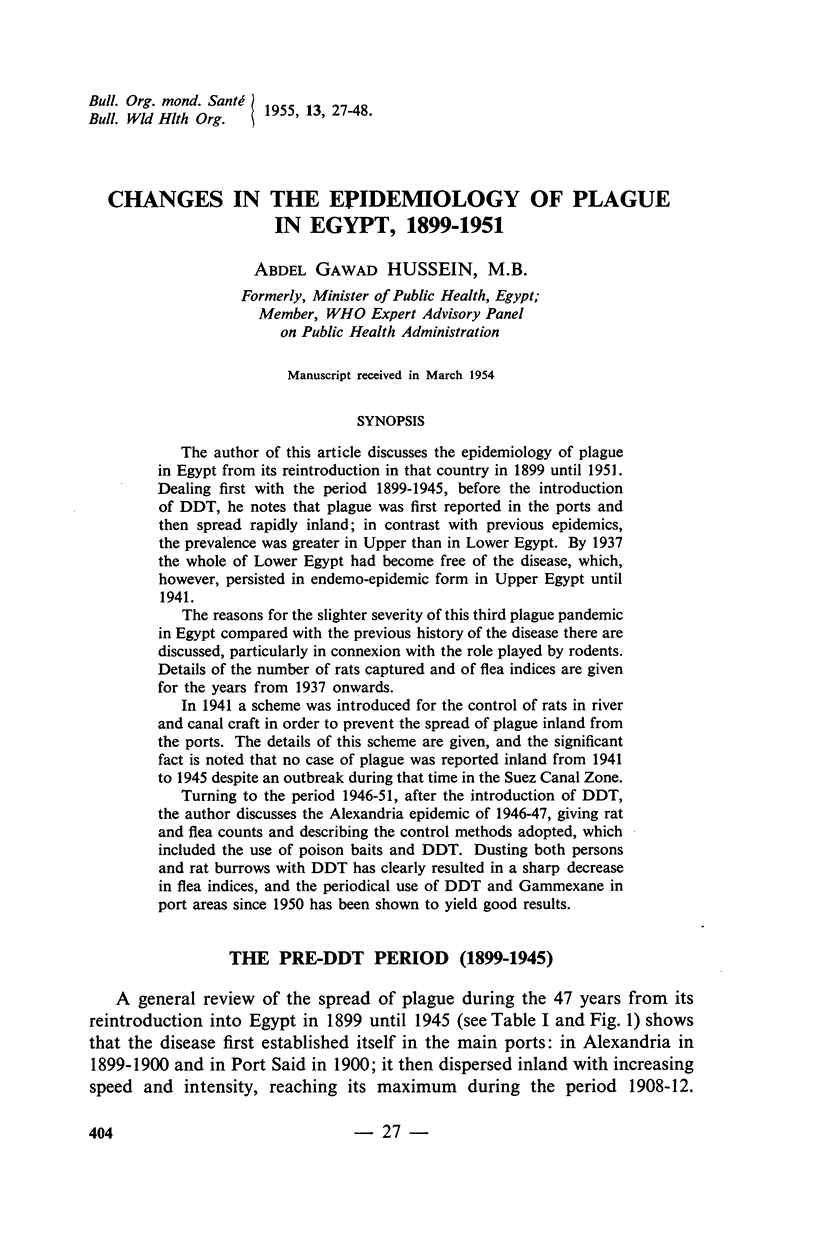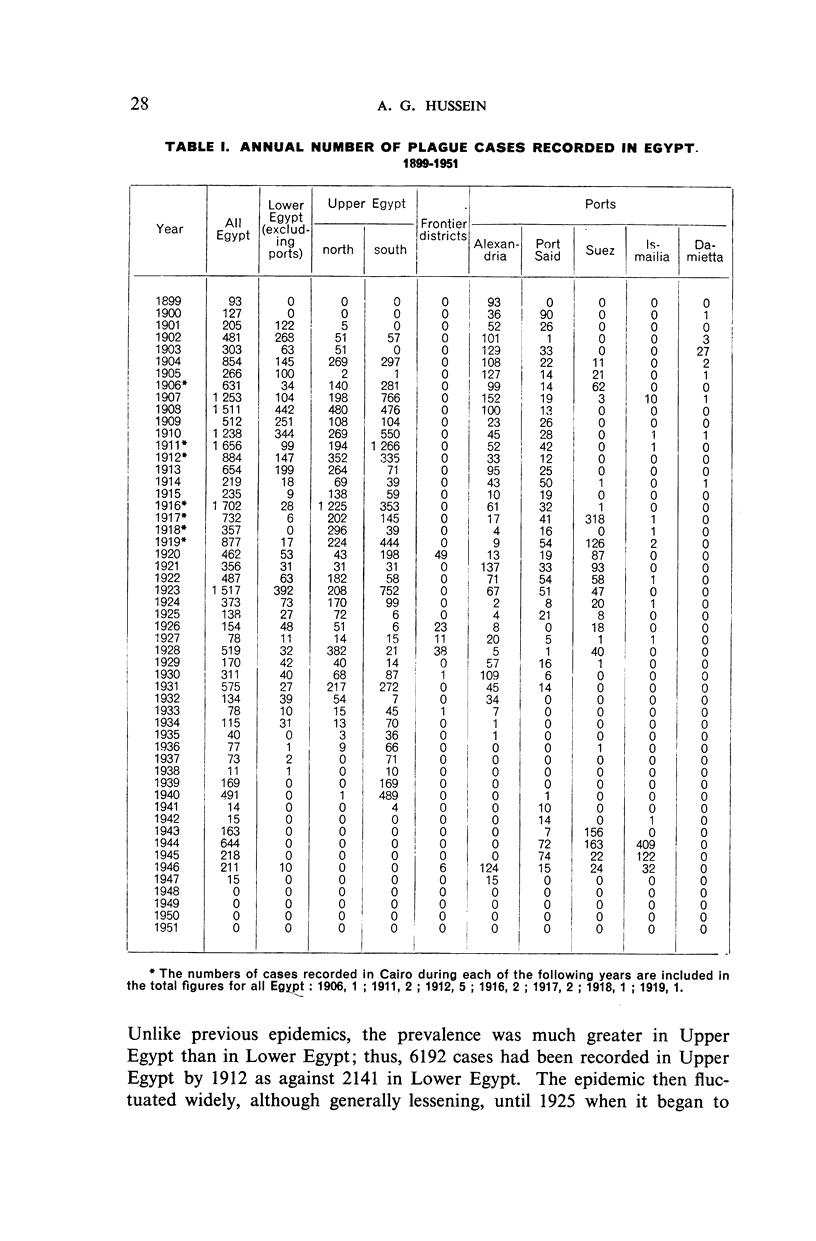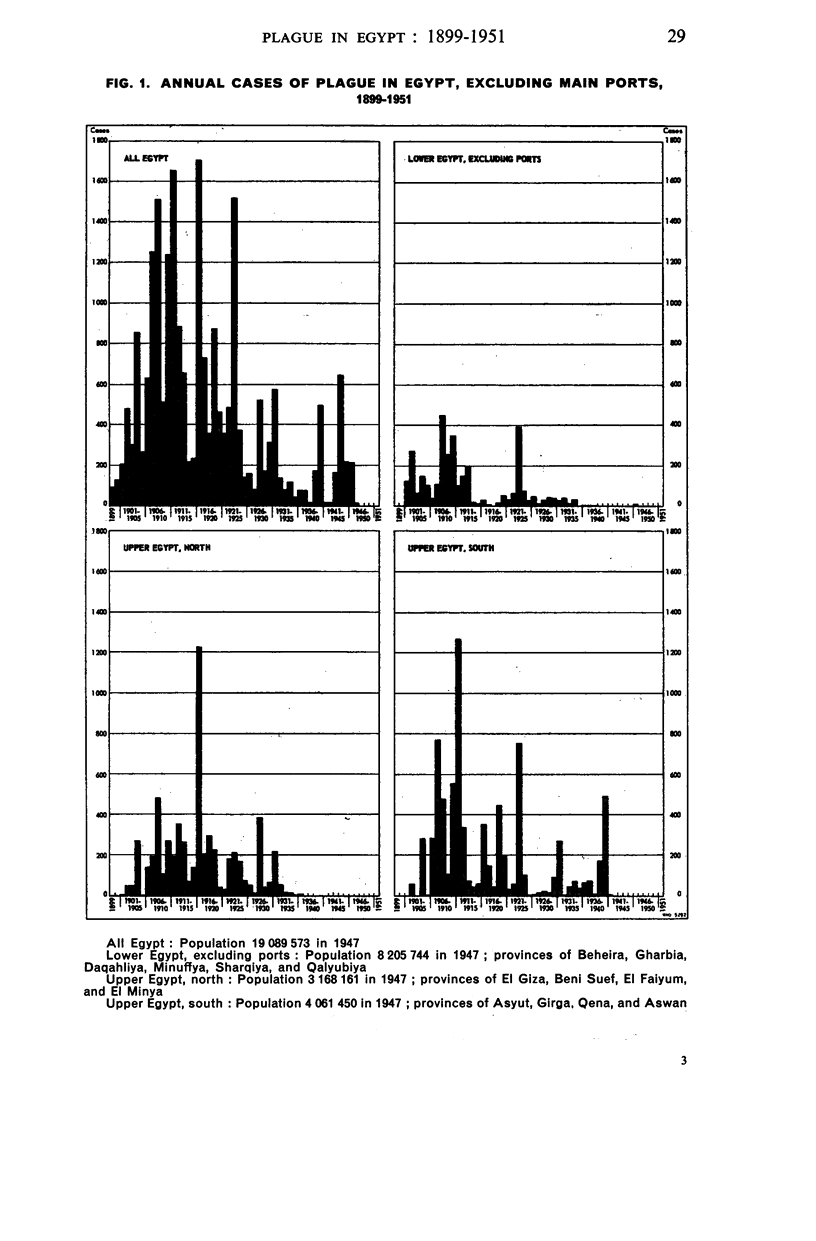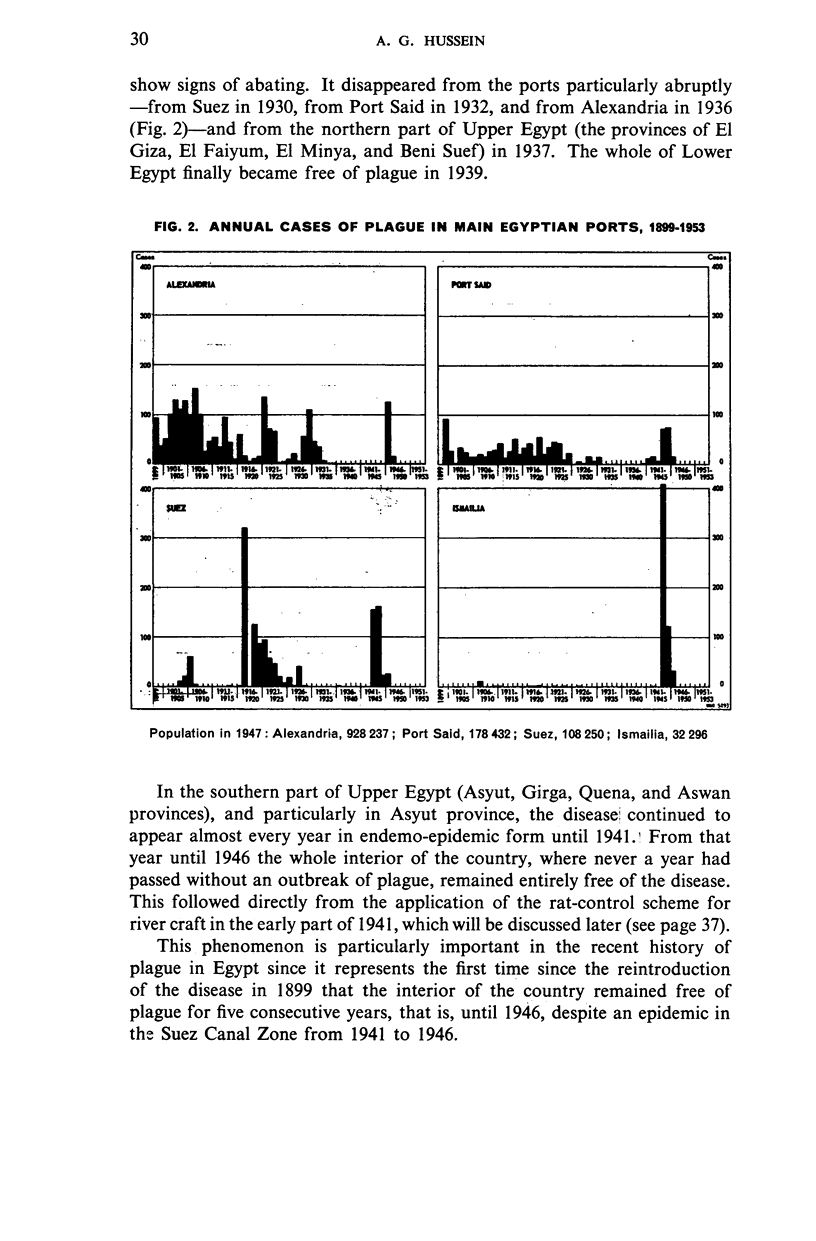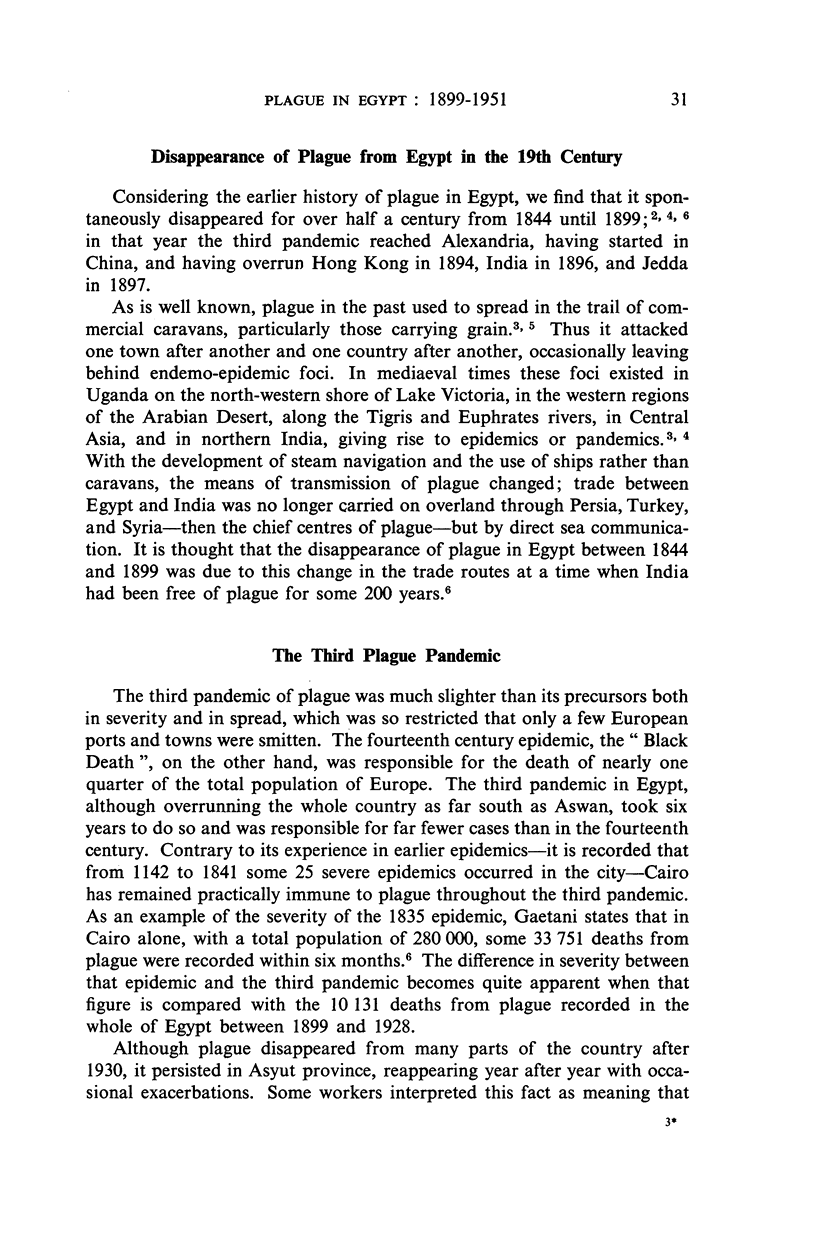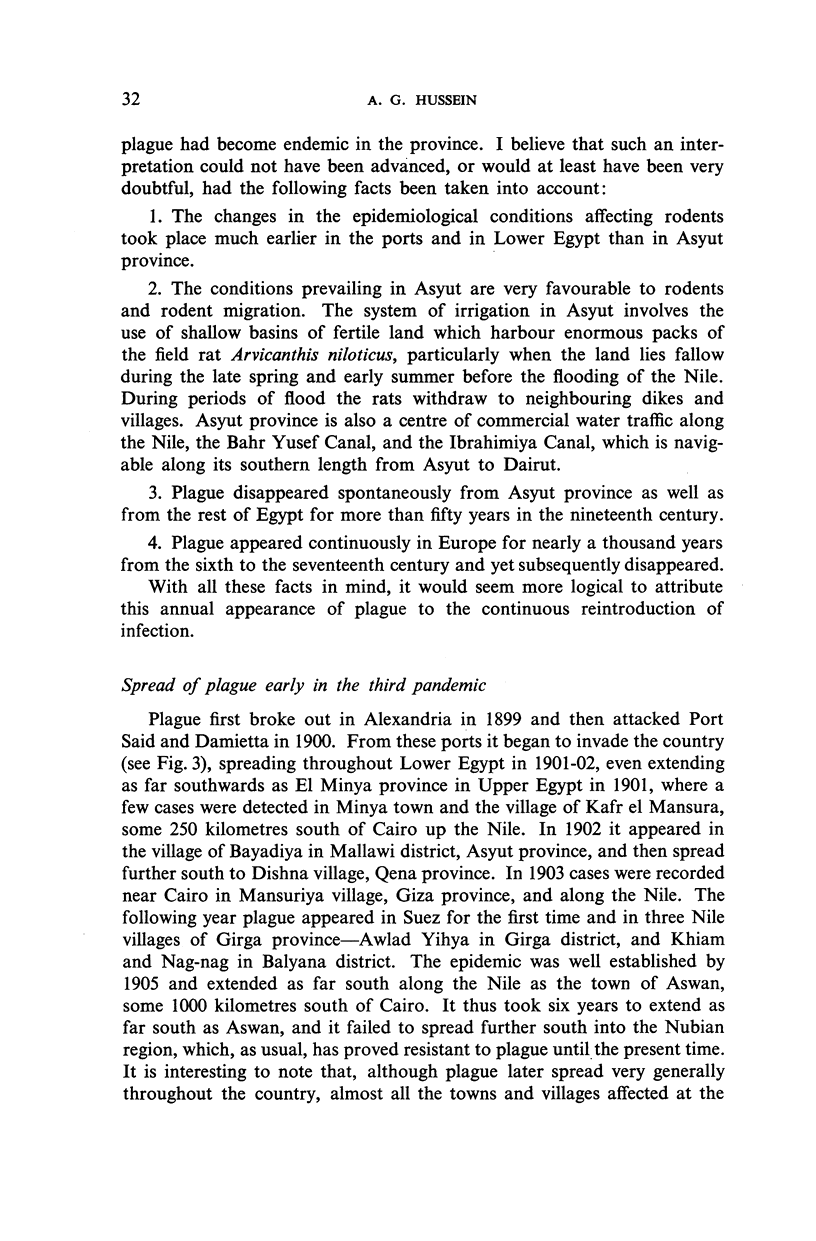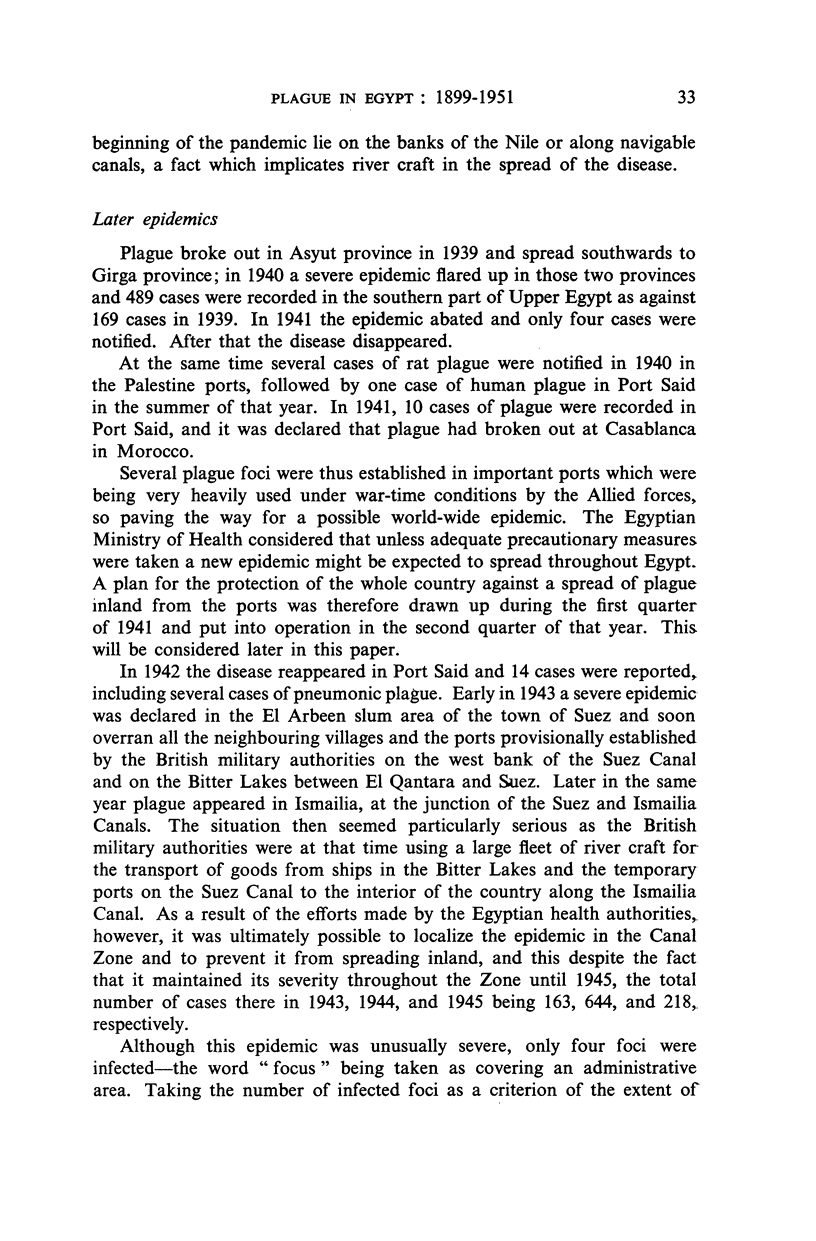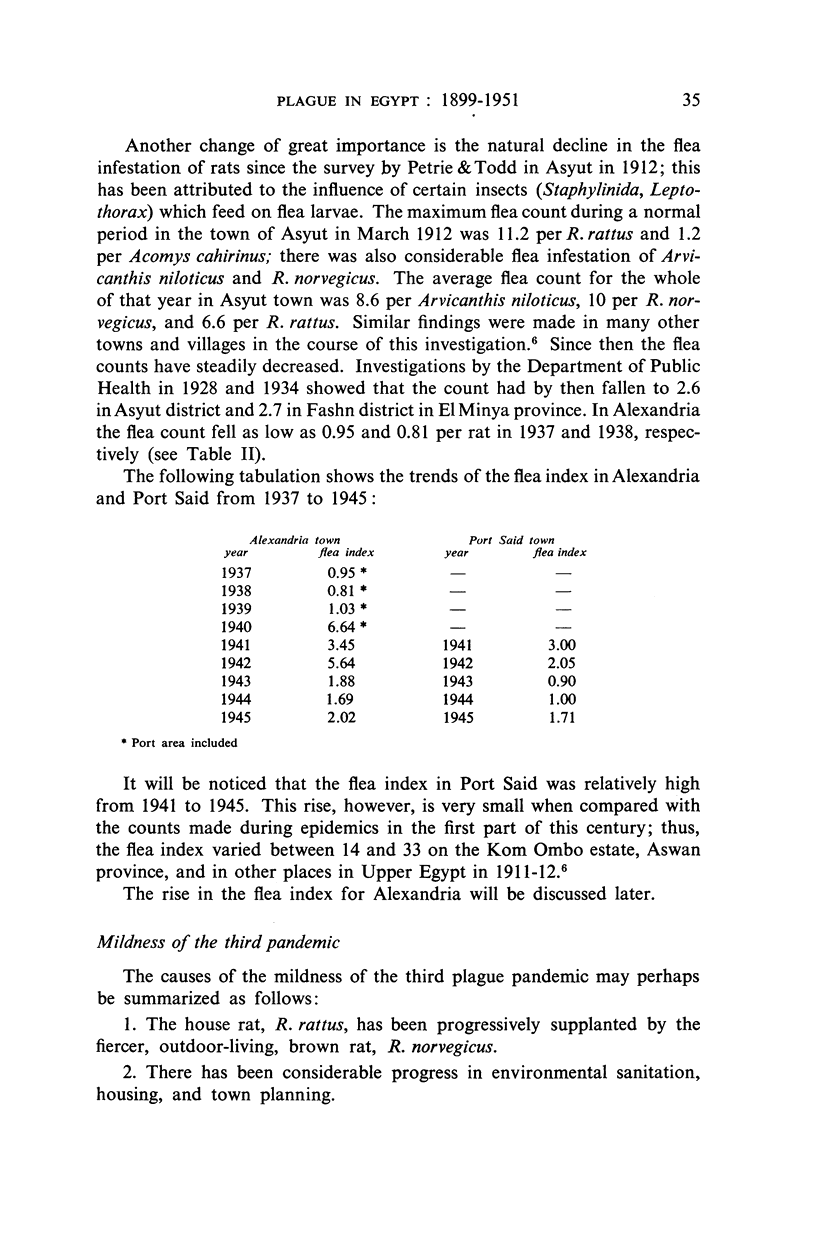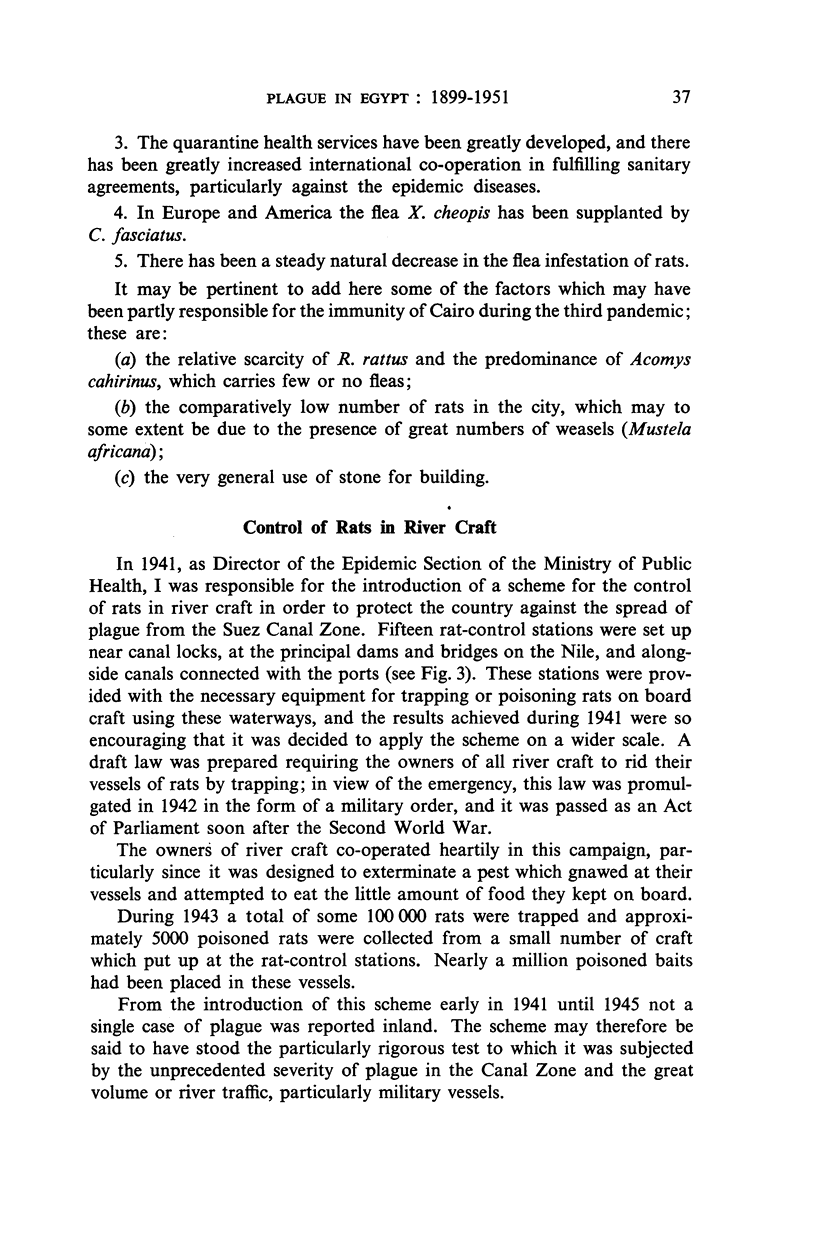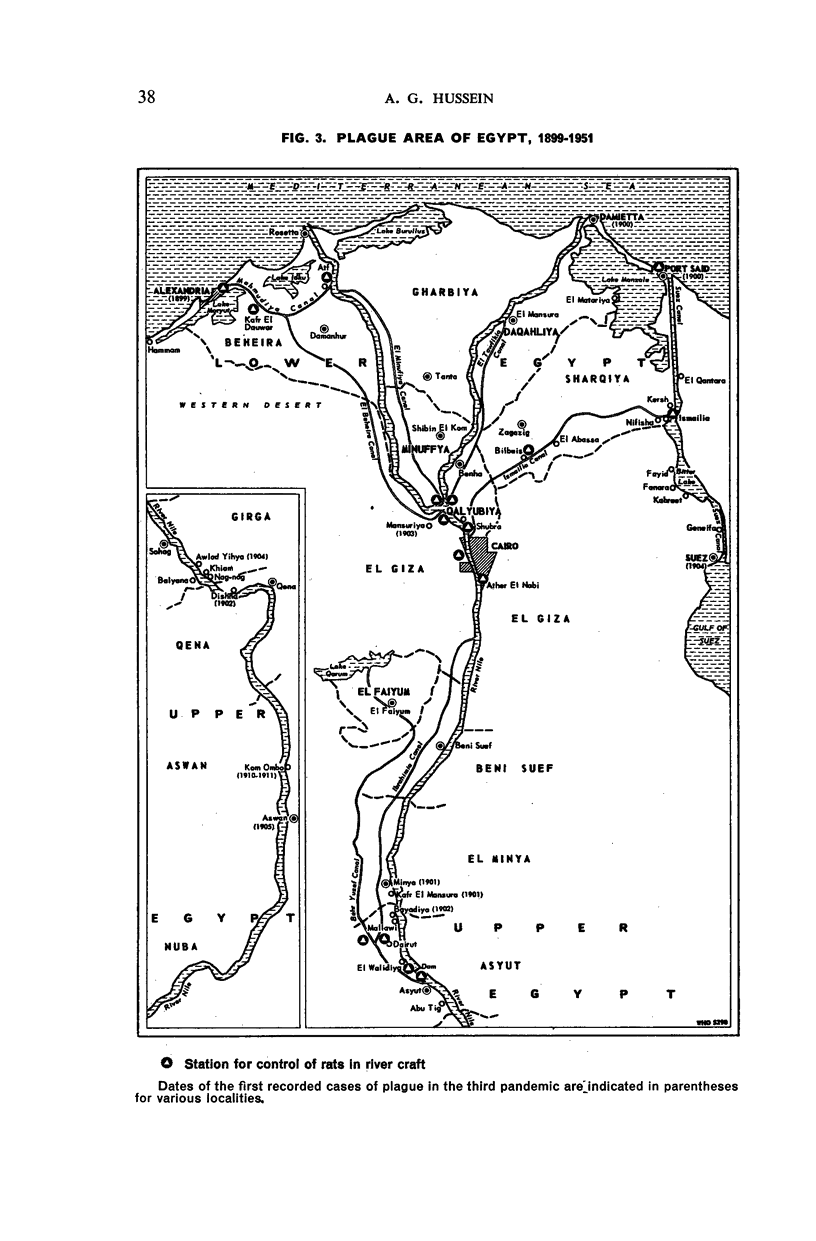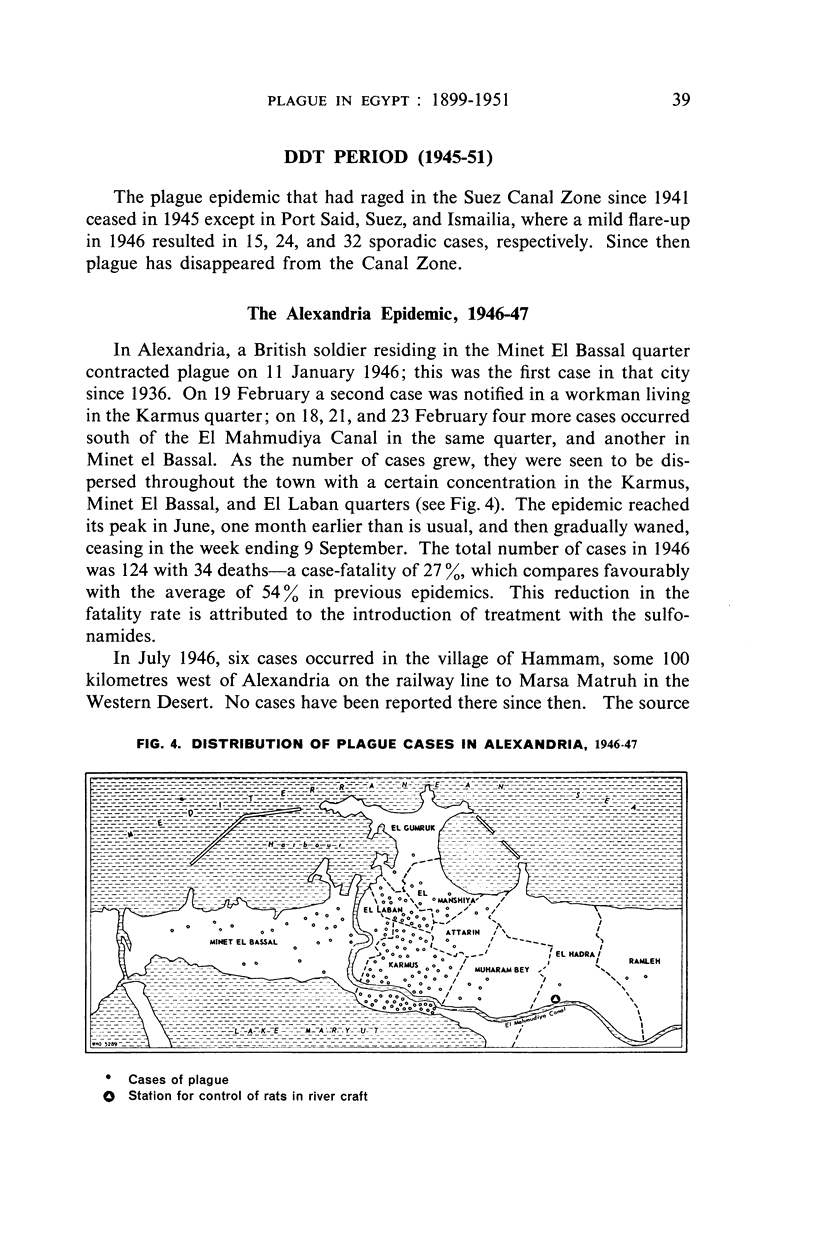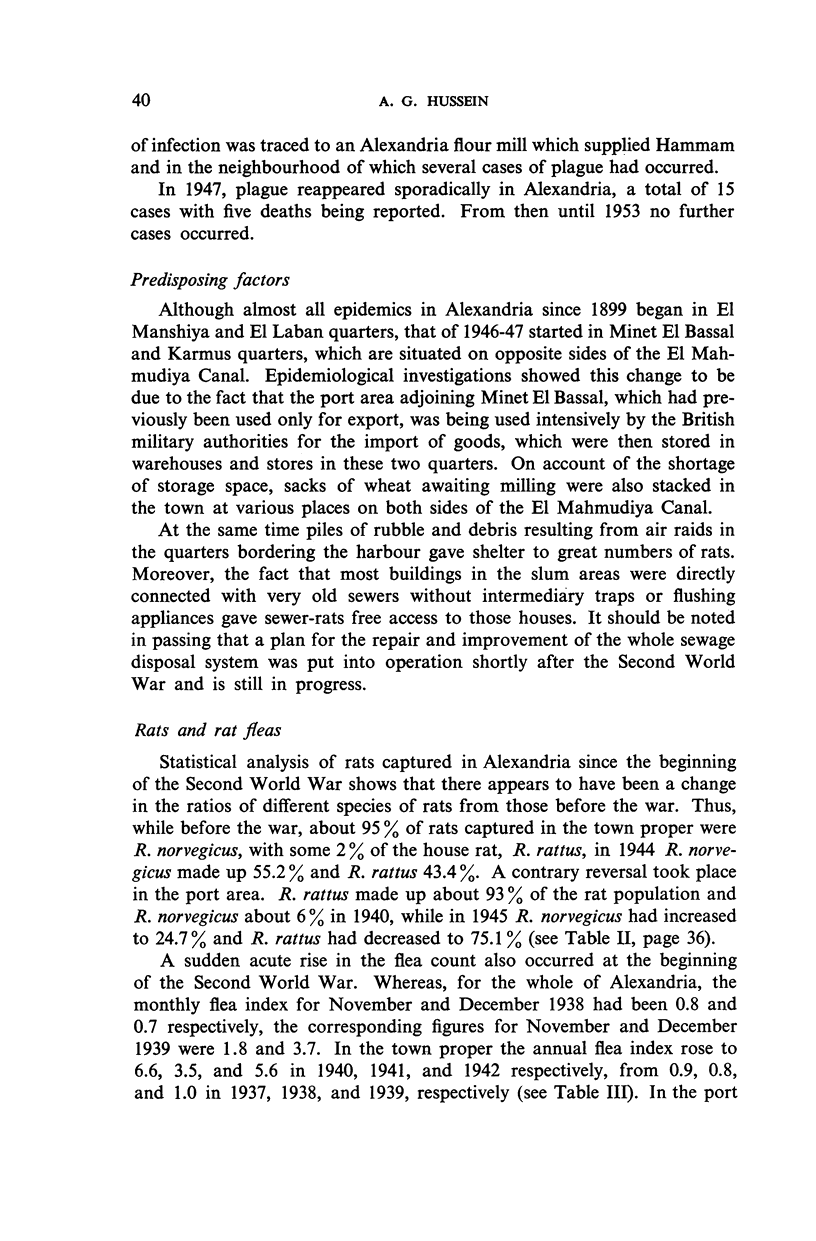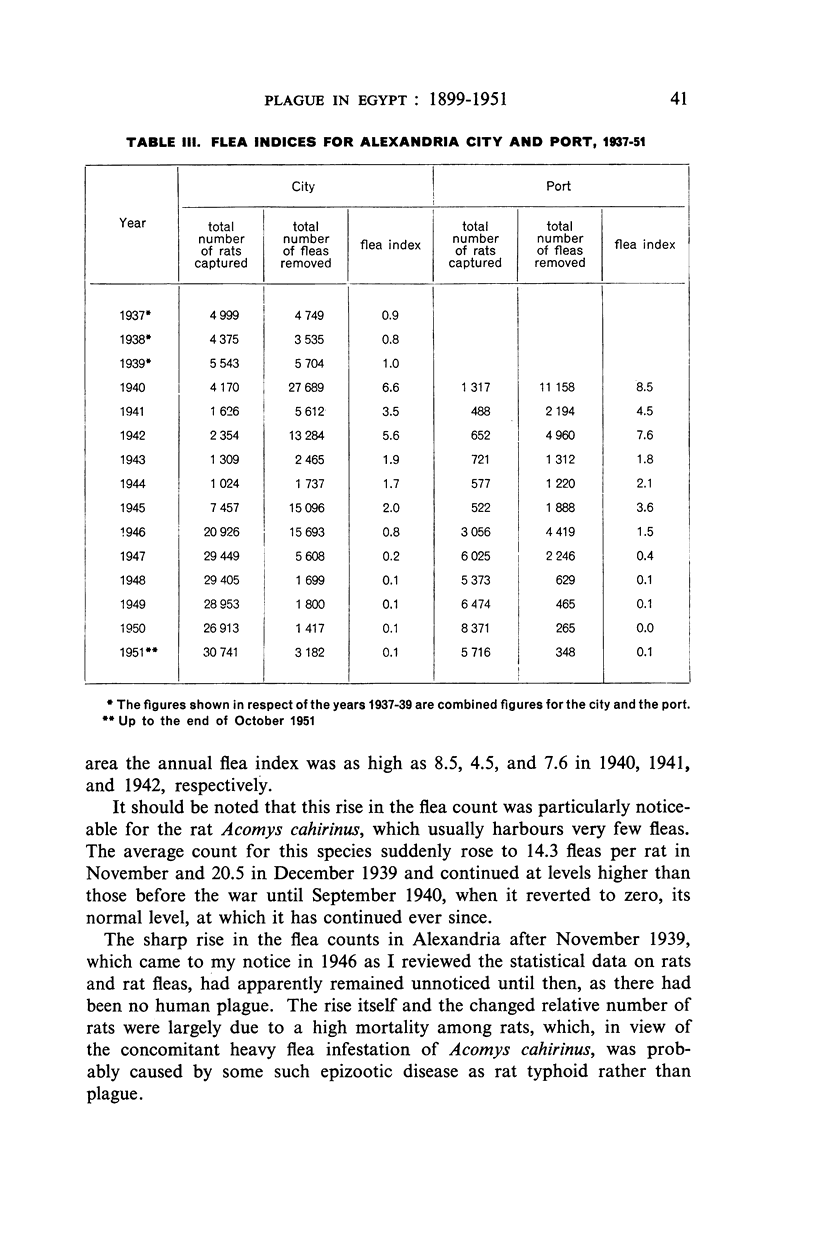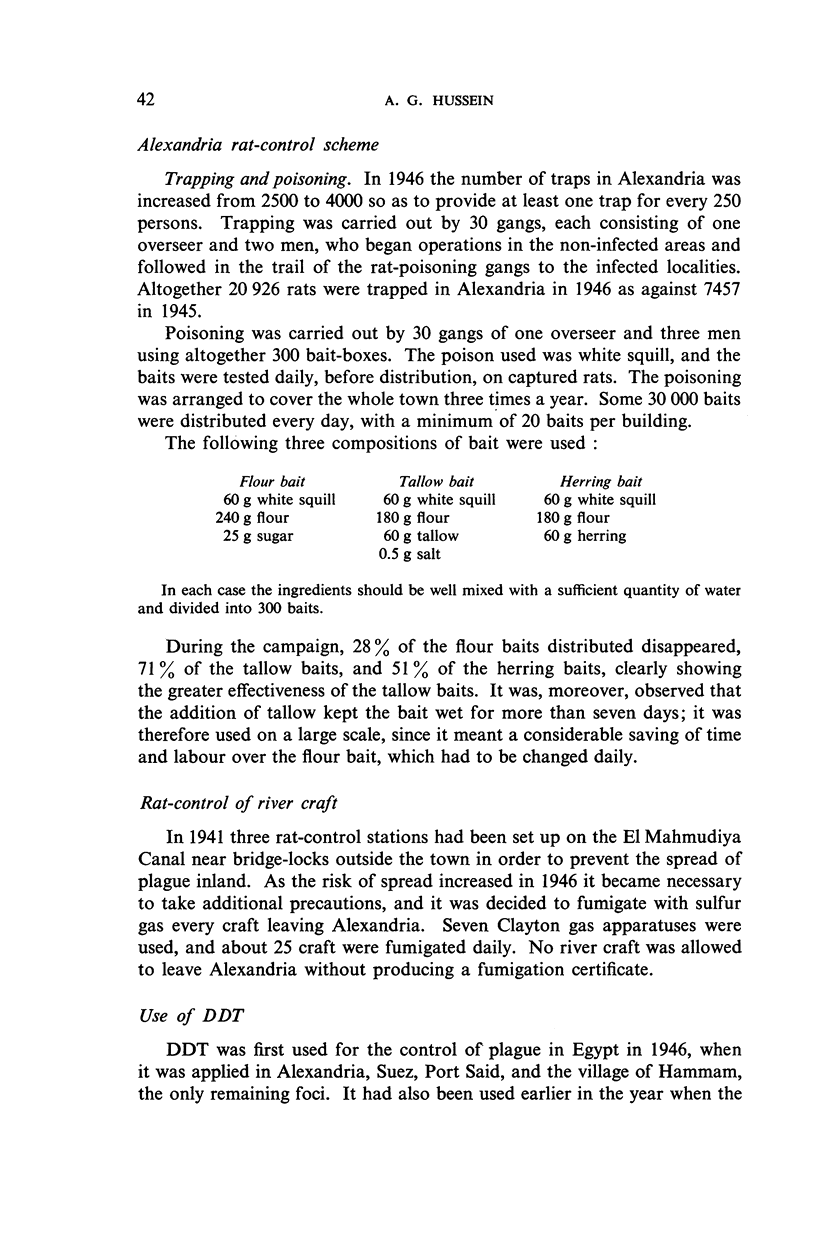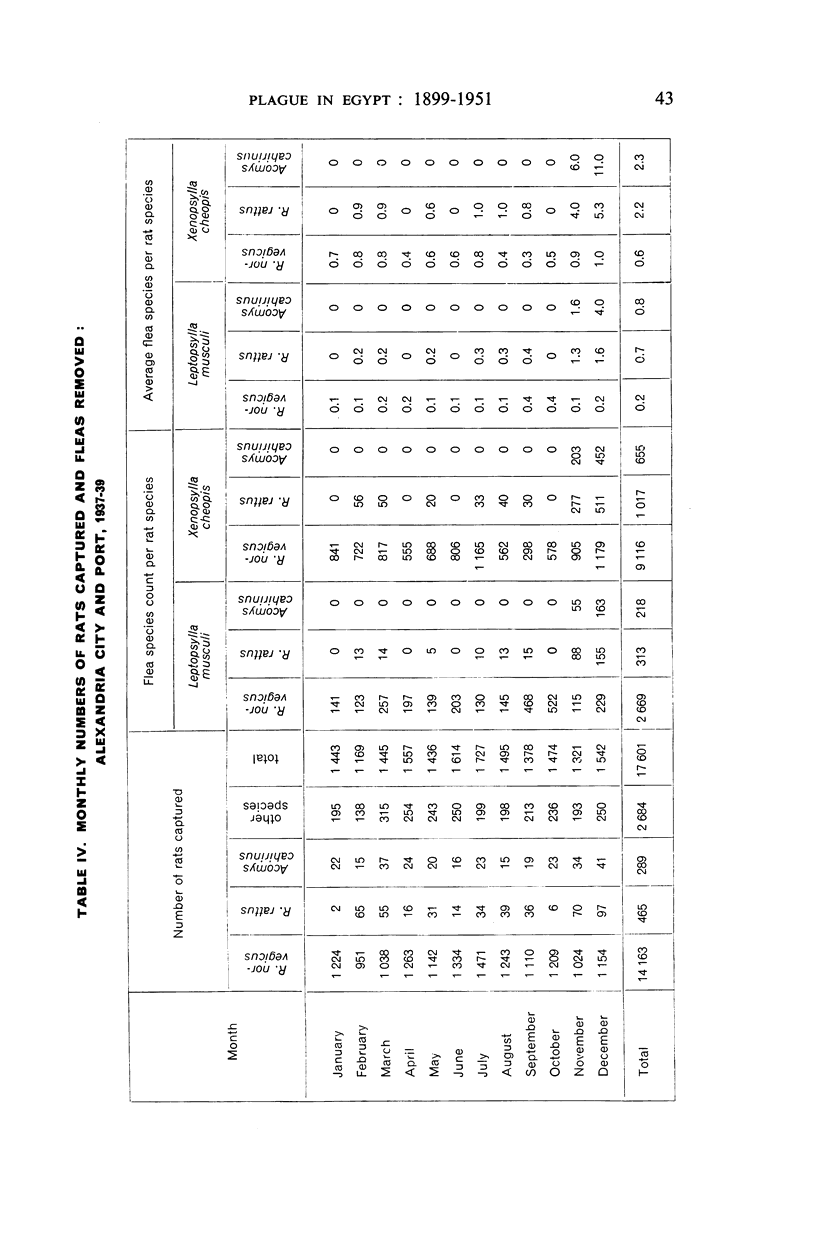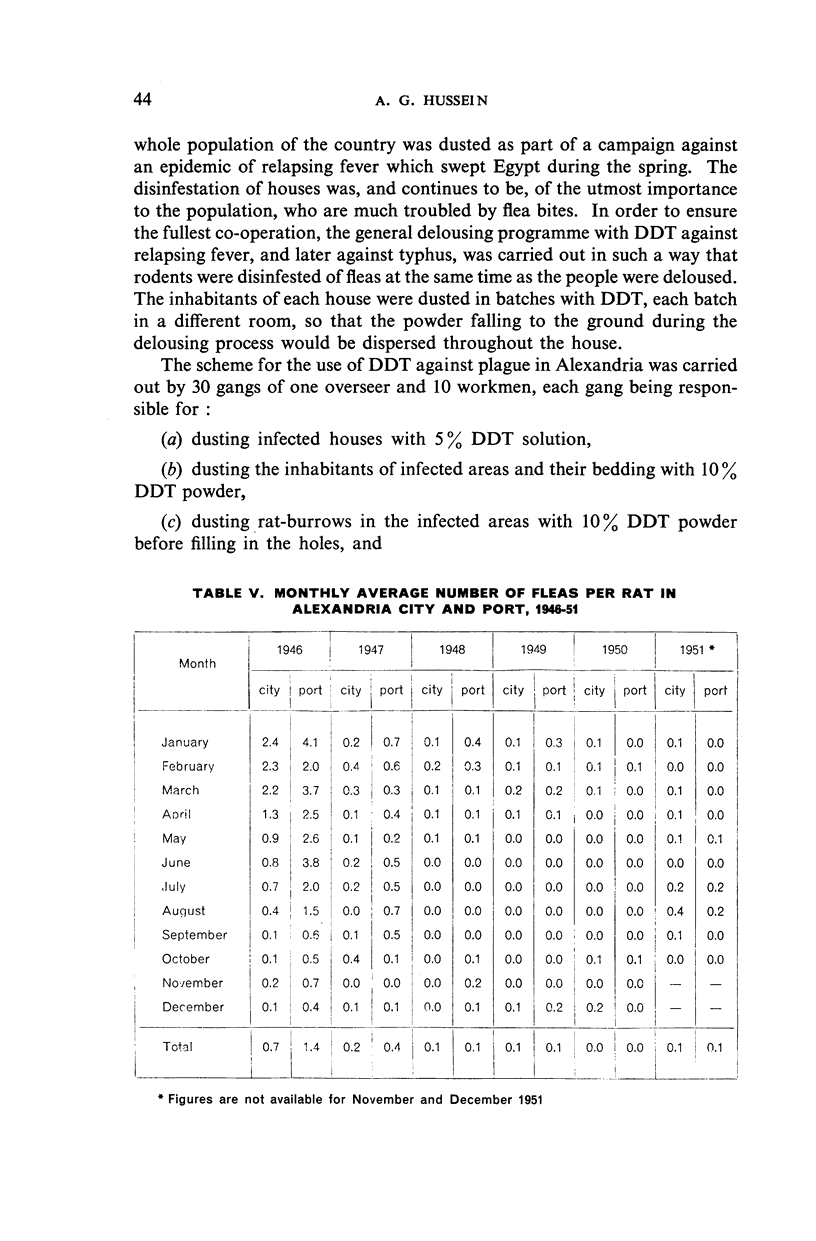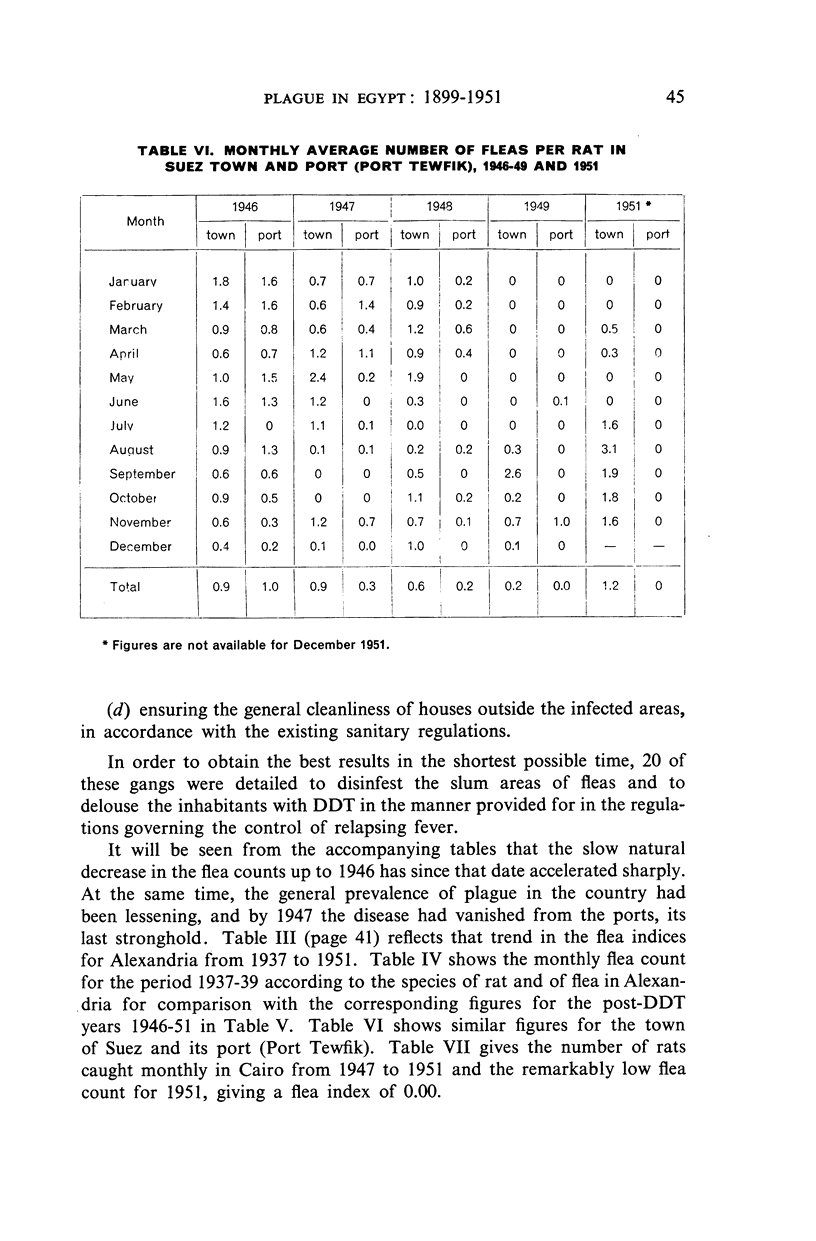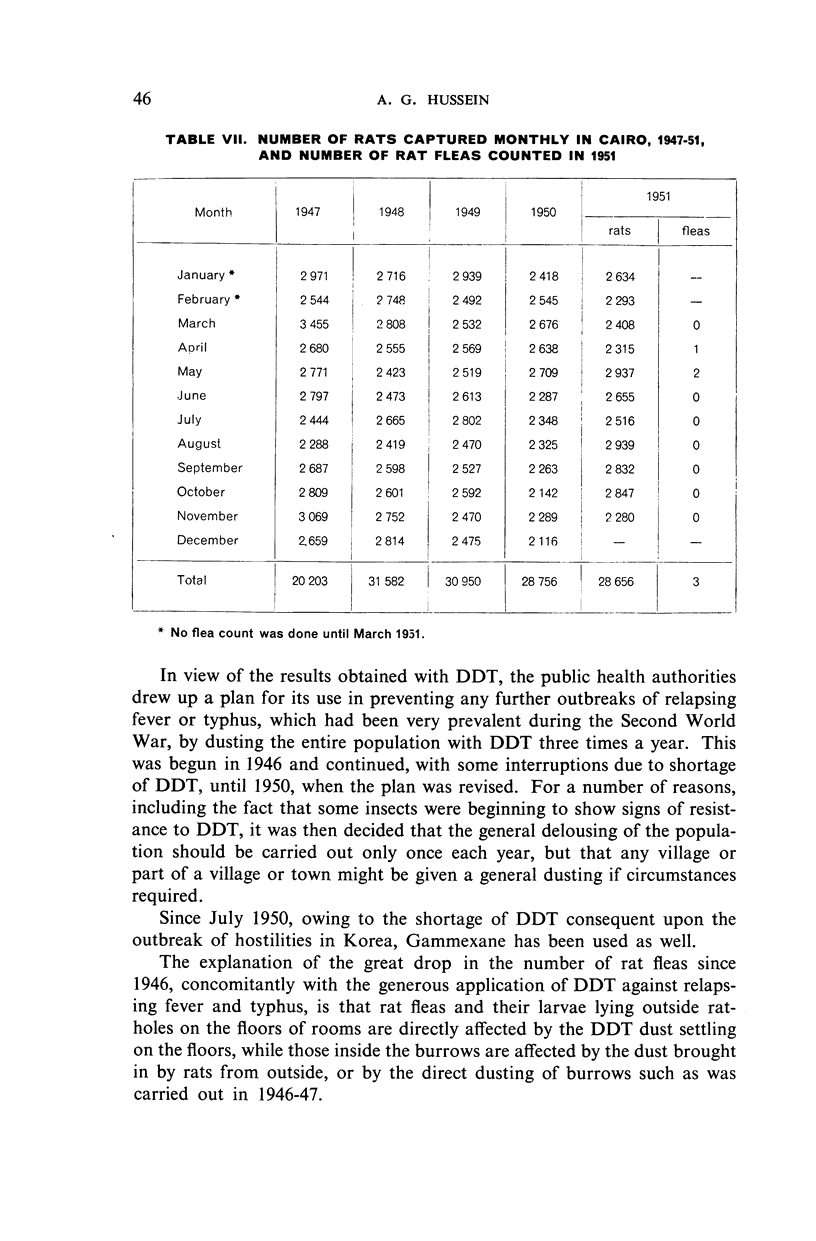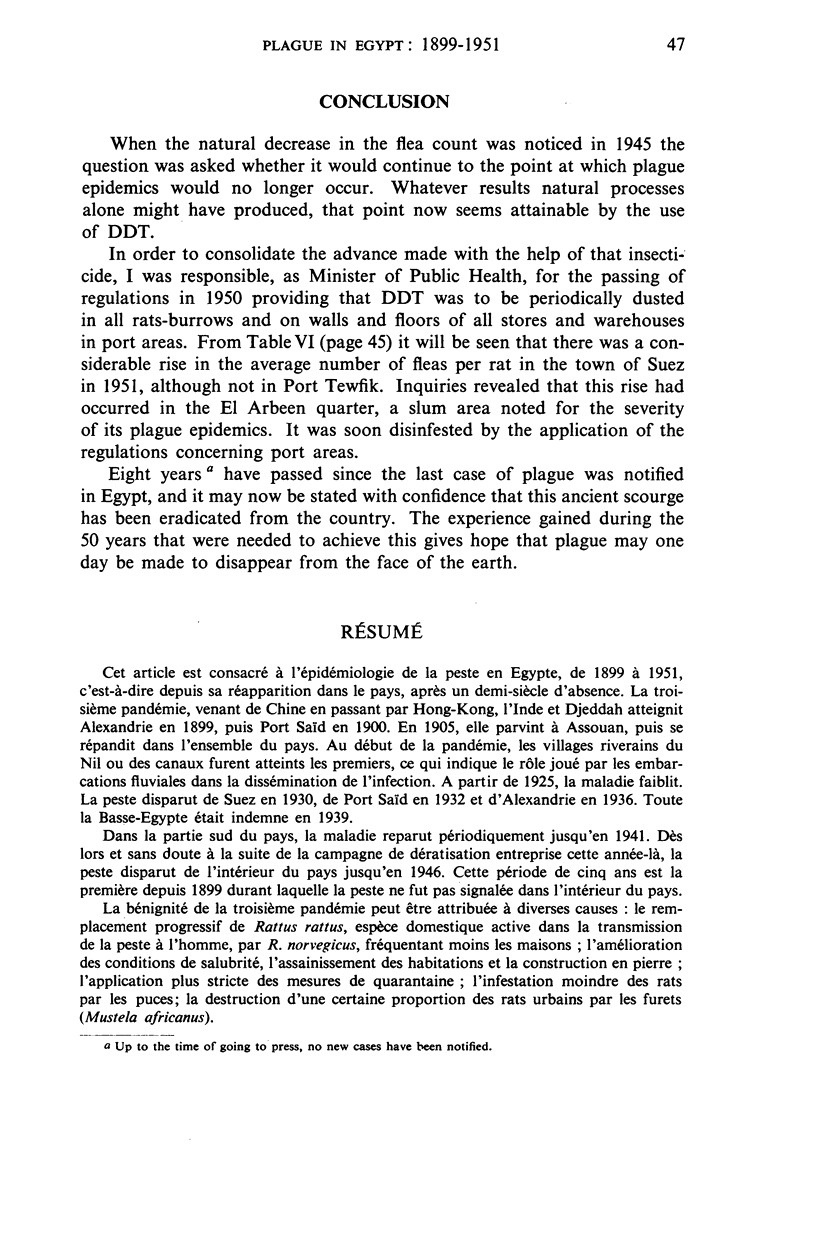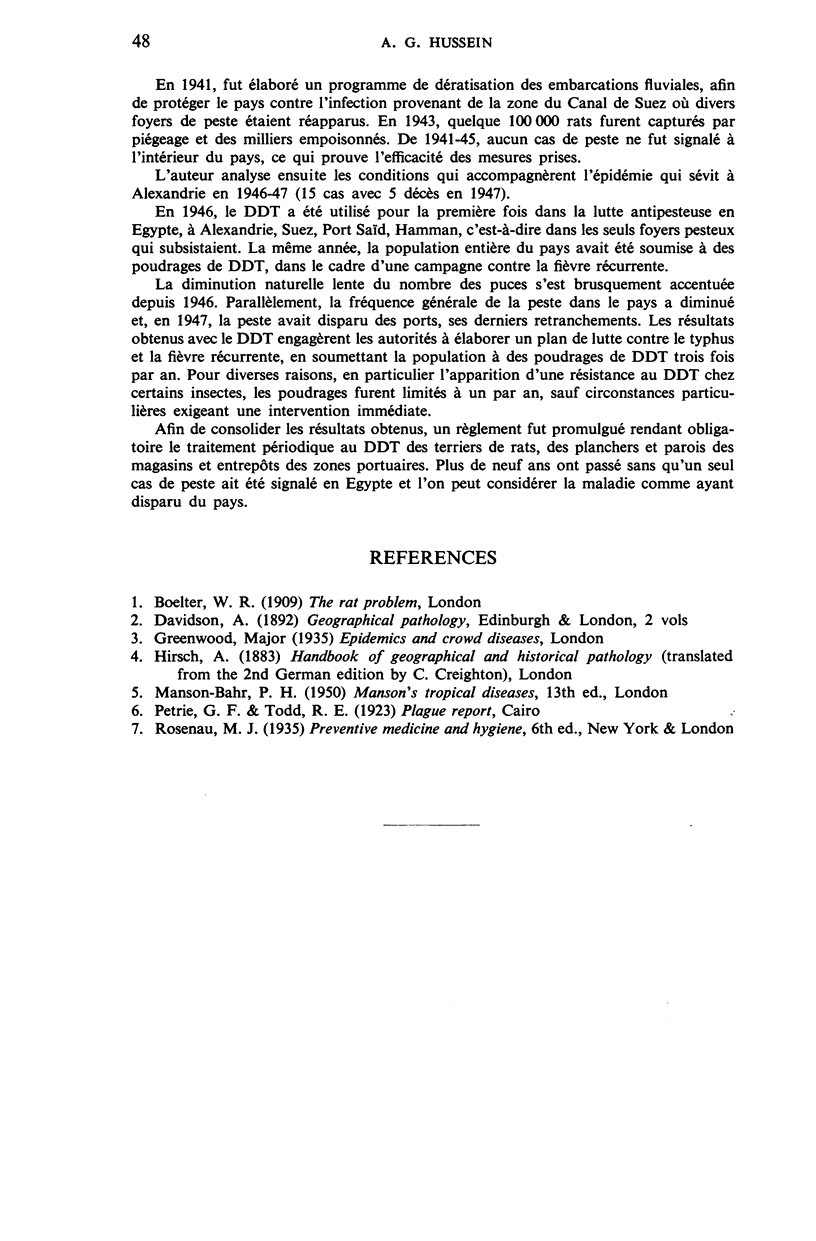Abstract
The author of this article discusses the epidemiology of plague in Egypt from its reintroduction in that country in 1899 until 1951. Dealing first with the period 1899-1945, before the introduction of DDT, he notes that plague was first reported in the ports and then spread rapidly inland; in contrast with previous epidemics, the prevalence was greater in Upper than in Lower Egypt. By 1937 the whole of Lower Egypt had become free of the disease, which, however, persisted in endemo-epidemic form in Upper Egypt until 1941.
The reasons for the slighter severity of this third plague pandemic in Egypt compared with the previous history of the disease there are discussed, particularly in connexion with the role played by rodents. Details of the number of rats captured and of flea indices are given for the years from 1937 onwards.
In 1941 a scheme was introduced for the control of rats in river and canal craft in order to prevent the spread of plague inland from the ports. The details of this scheme are given, and the significant fact is noted that no case of plague was reported inland from 1941 to 1945 despite an outbreak during that time in the Suez Canal Zone.
Turning to the period 1946-51, after the introduction of DDT, the author discusses the Alexandria epidemic of 1946-47, giving rat and flea counts and describing the control methods adopted, which included the use of poison baits and DDT. Dusting both persons and rat burrows with DDT has clearly resulted in a sharp decrease in flea indices, and the periodical use of DDT and Gammexane in port areas since 1950 has been shown to yield good results.
Full text
PDF